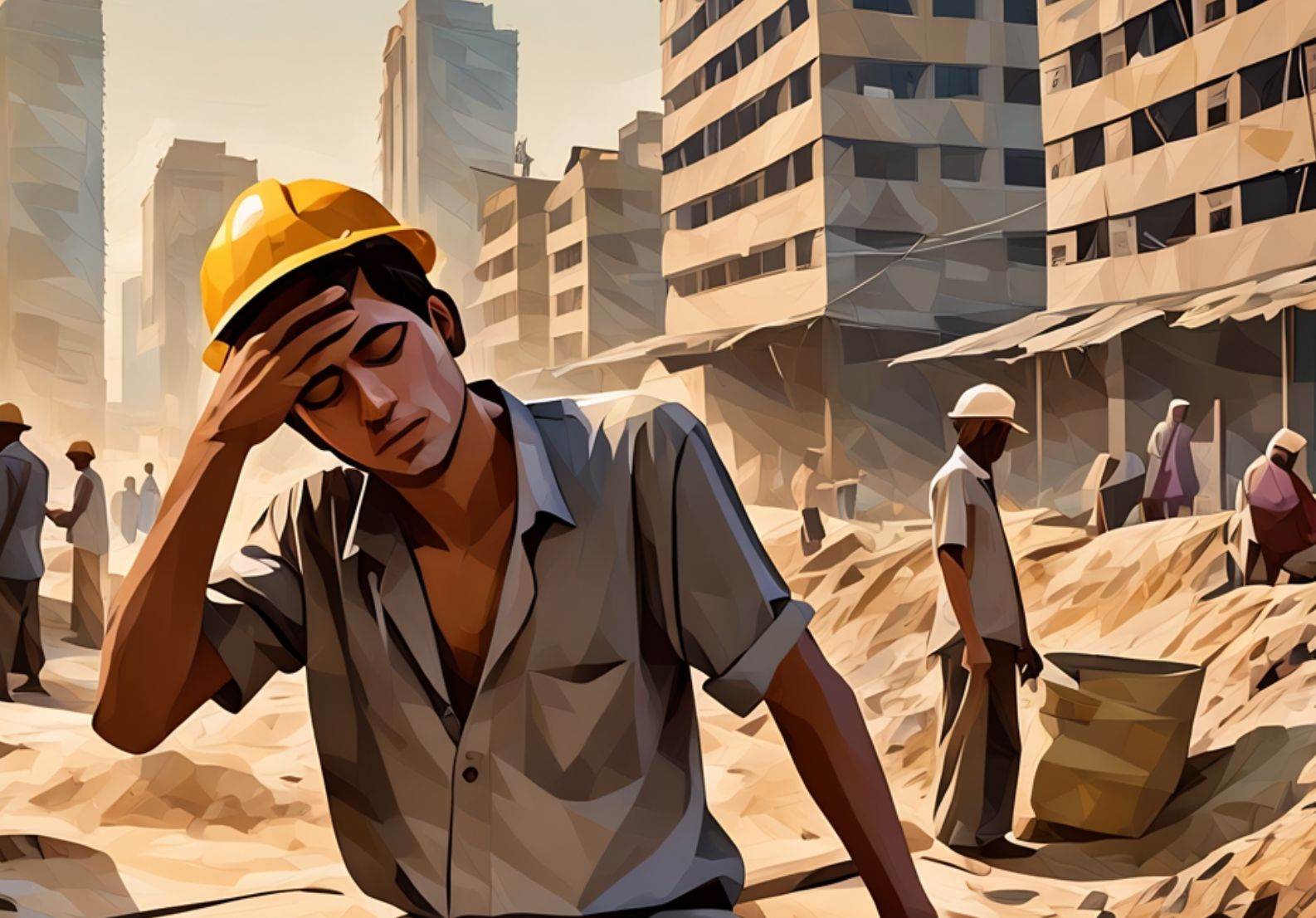Bangladeshi workers lose more than $280 annually due to heat stress
Muhammad Mainuddin Patwary
Publish: 14 Nov 2024, 12:25 AM

Have you ever considered how a scorching day might impact your income? Picture a hot summer day—the sun is relentless, and you’re struggling to perform at your best, or worse, you miss work altogether due to the heat.
How much money do you lose when you're unable to work, or when your productivity drops because of extreme temperatures? For many families living paycheck to paycheck, rising temperatures aren't just uncomfortable—they can directly threaten their ability to earn a living.
As climate change worsens, heat stress is becoming an escalating issue for millions of workers worldwide, especially in climate-vulnerable regions like Bangladesh.
A recent study by the Environment and Sustainability Research Initiative, Bangladesh, in collaboration with institutions like Khulna University, North South University, Bangladesh Forest Research Institute, University of Ottawa, and Clemson University, has uncovered startling findings.
Published in the Urban Climate Journal, the research suggests that heat stress could be costing Bangladeshi workers an average of $281 per person annually.
For many households, this loss translates to missed income that could have gone toward essentials like food, healthcare, and education. It’s not just a number—it’s the difference between financial stability and hardship.
The study surveyed 513 workers from various sectors—including agriculture, construction, healthcare, transportation, education, and more—spanning different levels of work intensity: light, medium, and high.
Imagine a farmer unable to work in the fields due to the unbearable heat, or a construction worker who can’t stay productive under the blazing sun.
The study found that 99% of Bangladeshi workers across diverse industries experience heat stress at work—a hidden burden that not only affects their health but also undermines the nation’s productivity.
Over half of the workers also missed significant work days due to extreme heat, with 64% of students and 51% of other professionals reporting they had to take time off just to escape the oppressive conditions.
For those who did manage to work, heat stress still took a toll on their productivity. Nearly 90% of workers reported a decline in performance when temperatures soared, meaning the country’s workforce is losing valuable time and income.
On average, workers missed over 10 days (or 67 hours) per year, costing them around $211 annually.
For professionals, the impact of “presenteeism” (showing up for work but not being able to perform at full capacity due to heat) was even greater—up to 92 hours lost per year, translating to a financial loss of $315 annually.
The financial drain was particularly severe for professionals in high-risk sectors, who faced losses as high as $387 per year.

The economic burden of heat stress
Who bears the greatest economic burden from heat stress? This study reveals that older adults, workers in sectors such as education, finance, agriculture, healthcare, manufacturing, construction, and labor-intensive jobs, as well as those lacking proper cooling systems at work, are among the most affected.
These individuals are the backbone of Bangladesh’s economy, yet they are also the most vulnerable to extreme heat.
Many of them endure harsh conditions in poorly ventilated workplaces or work outdoors under the blazing sun. The reliance on outdated cooling methods only amplifies their risk, leaving them exposed to dangerously high temperatures.
With projections indicating more intense heat waves in the future, we must confront the harsh reality of how rising temperatures are impacting our daily lives and livelihoods.
The government must take immediate action to implement clear heat safety regulations that promote workplace adaptations and create cooler environments.
Key steps include improving workplace ventilation, adjusting working hours to the cooler parts of the day, ensuring access to hydration, and enforcing health and safety guidelines specifically addressing heat stress.
It is also essential to prioritize cooling technologies, particularly in high-risk sectors. However, economic constraints mean these solutions must be both affordable and scalable.
Raising awareness about the dangers of heat stress and educating workers about its effects is crucial.
Ongoing research is necessary to refine strategies and adapt to evolving conditions. Moreover, encouraging flexible work hours for outdoor workers and offering financial support to businesses for installing cooling solutions will help protect workers’ health and enhance productivity.
Long-term solutions are vital. Investing in cooling infrastructure and establishing heat safety standards can significantly improve worker well-being and productivity. The cost of inaction is too high—without addressing heat stress, the workforce will continue to suffer, and the economy will take a hit.
Heat is not just a seasonal nuisance; it’s an economic emergency. We cannot ignore the workers whose livelihoods are being drained by heat stress. Their struggles should drive our policies and actions.
Together, we can address this heat stress crisis and safeguard the future of millions. The question is: Are we prepared to tackle this challenge head-on?
The health of our workforce—and the strength of our economy—depends on the decisions we make today. Let’s unite to ensure our workers don’t just survive, but thrive, despite the rising temperatures.
—
Muhammad Mainuddin Patwary is the founder & director, Environment and Sustainability Research Initiative, Bangladesh
Co-authors
Mondira Bardhan (PhD student, Virtual Reality and Nature Lab, Department of Parks, Recreation, and Tourism Management, Clemson University, USA; Co-founder, Environment and Sustainability Research Initiative, Bangladesh); Sardar Al Imran (PhD student, The Chinese University of Hong Kong; Researcher, Environment and Sustainability Research Initiative, Bangladesh); Sharif Mutasim Billah (Co-founder, Environment and Sustainability Research Initiative, Bangladesh); Mehedi Hasan (Graduate student, Southern Illinois University Edwardsville, USA; Researcher, Environment and Sustainability Research Initiative, Bangladesh); Asma Safia Disha (Lecturer, Department of Environmental Science and Management, North South University, Bangladesh; Co-founder, Environment and Sustainability Research Initiative, Bangladesh); Md Pervez Kabir (PhD Candidate, Department of Civil Engineering, University of Ottawa, Canada; Co-founder, Environment and Sustainability Research Initiative, Bangladesh); Chameli Saha (Assistant Professor, Forestry and Wood Technology Discipline, Khulna University, Bangladesh); Md. Najmus Sayadat Pitol (Researcher, Mangrove Silviculture Division, Bangladesh Forest Research Institute, Khulna 9000, Bangladesh); Matthew H E M Browning (Associate Professor, Virtual Reality and Nature Lab, Department of Parks, Recreation, and Tourism Management, Clemson University, USA).
